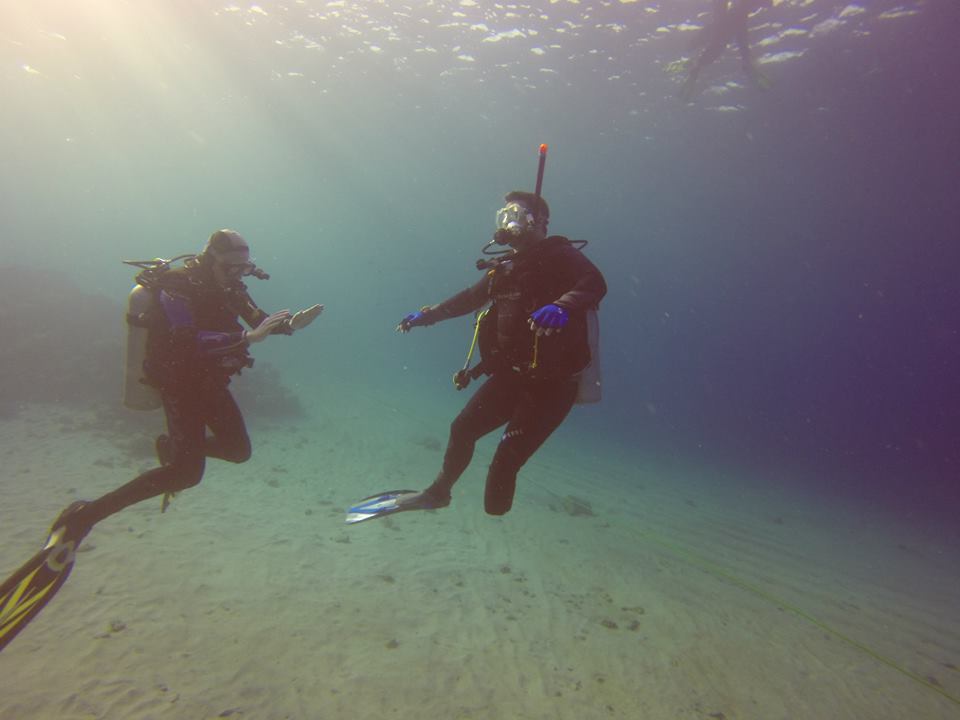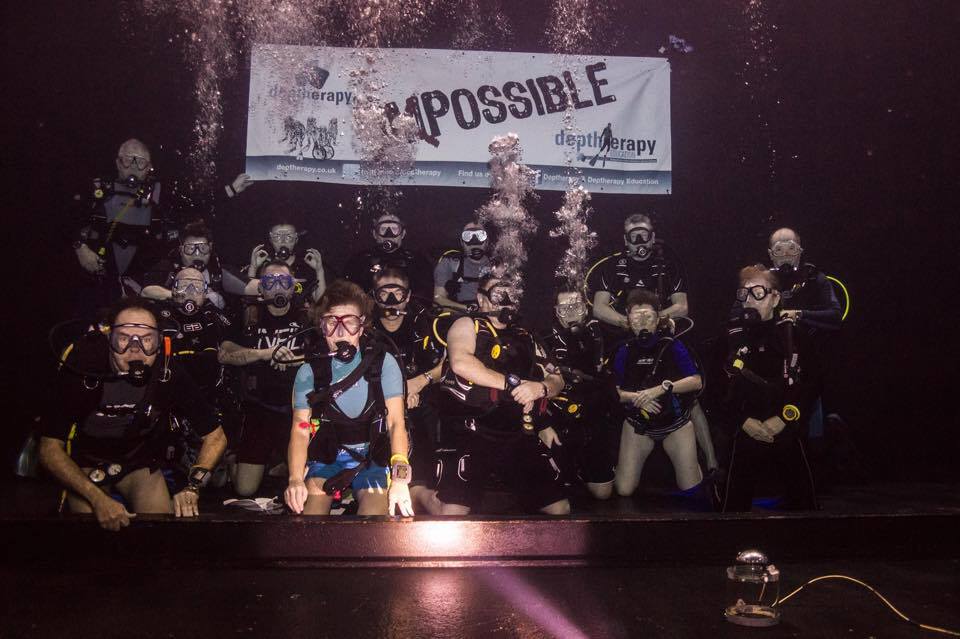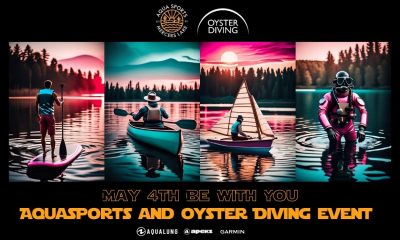News
Scuba Diving in Rehab
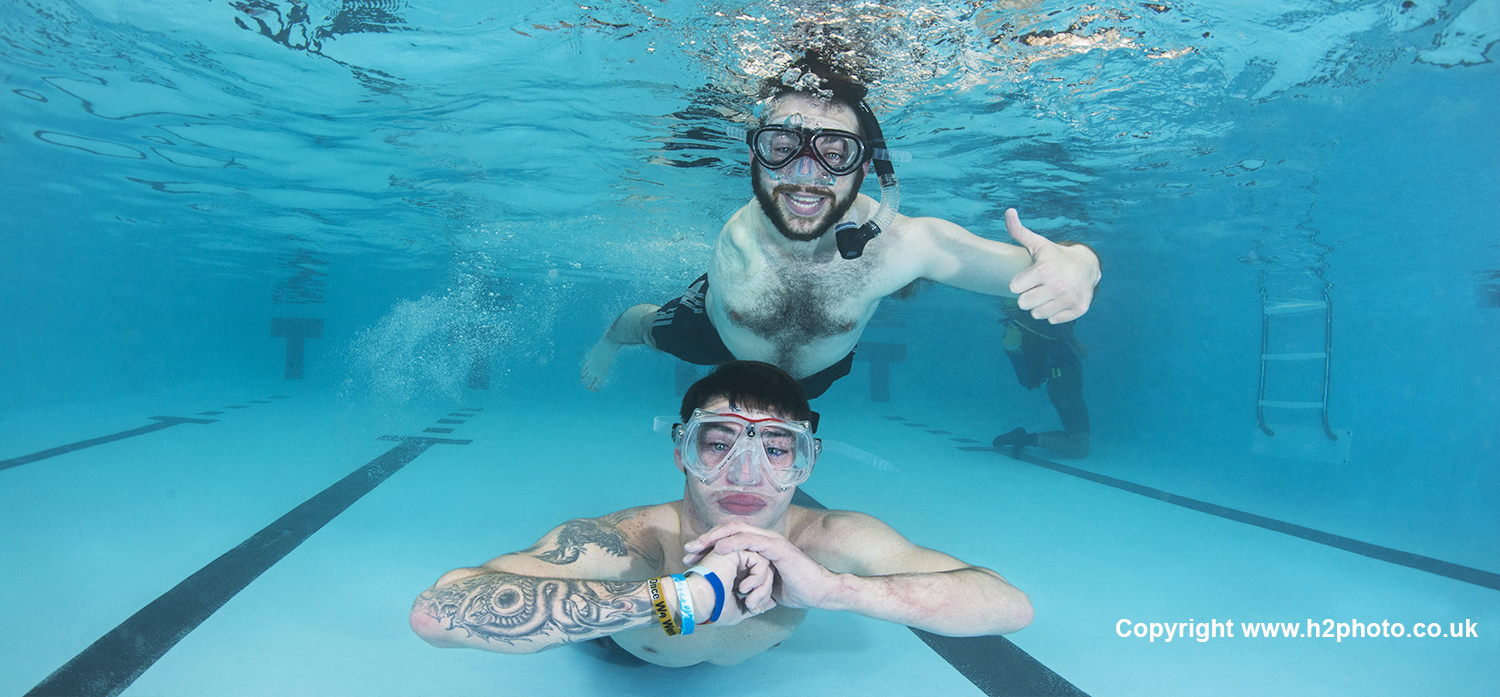
Last year, whilst taking part in the 2015 Miss Scuba UK competition, I had the pleasure of being introduced to Richard Cullen, the Chairman and life vice president of the charity ‘Deptherapy’, a charity that seeks to run specially adapted scuba diving programmes to aid seriously injured UK veterans.
I was introduced to veteran Danny Martin, who told me that on returning from Afghan, he was diagnosed with Stage 3 testicular cancer, which meant that he had to undergo lifesaving surgery to remove the affected cancer masses. After trying to cope with both the trauma of returning from war and a serious cancer diagnosis within months of each other, it’s not surprising that Danny was diagnosed with post traumatic stress disorder. In his words, “I went down a very dark road, turning mean, angry, and frustrated, and it got to a point where I was on the brink of losing everything, including my wife, my kids, and my house. I couldn’t take life any longer.”
The team at Deptherapy were alerted to the issues Danny was facing, and gave him round the clock help in the form of talking therapies for weeks on end. They offered Danny a trip to Egypt to complete a diving course, a sport that he had never tried before. He described the experience as life changing, and said that being under the water cleared his mind of the problems consistently running through his head.
I also met Chris Baker, a disabled Army Veteran who was injured by an IED in Iraq. He had sustained extensive and complicated injuries, and due to crippling pain and a state of mental collapse on realising he would never walk again (after previously living a very active lifestyle), he was confined to his bed for almost 5 years. I was shocked at the extent of Chris’s spinal injuries, and the horrendous mental health issues that both Danny and Chris had faced after returning from war, but after further reading I have discovered that they are certainly not alone.
The combination of modern warfare and modern medicine has led to a rise in injured veterans returning home. Between 2006 and 2013, a total of 6,663 UK personnel were aero-medically evacuated from Afghanistan on medical grounds (Gov.co.uk accessed December 15). This obviously represents a unique challenge for healthcare professionals in caring for both the physical and mental aspects of their rehabilitation.
In terms of the mental health implications, a report by the Ministry of defence in 2013 stated 1.8% of servicemen were diagnosed with post traumatic stress disorder (PTSD), and being a student Doctor having previously spent time in traumatic injury units, I have seen first hand the ongoing struggles associated with the standard rehabilitation process. Treatments currently available for PTSD include counselling, CBT and in some cases anti depressant medication (NHS 2015). However, as with most drugs these have unwanted side effects. The sort of symptoms specifically seen in veterans with PTSD can be impaired concentration and difficulty in impulse control (Arnsten A, 2015). Alongside the standard treatments, alternative therapies such as holistic treatments (acupuncture, hypnotherapy, meditation and yoga) are also sometimes used to manage the condition (US Department of veteran’s affairs, 2015).
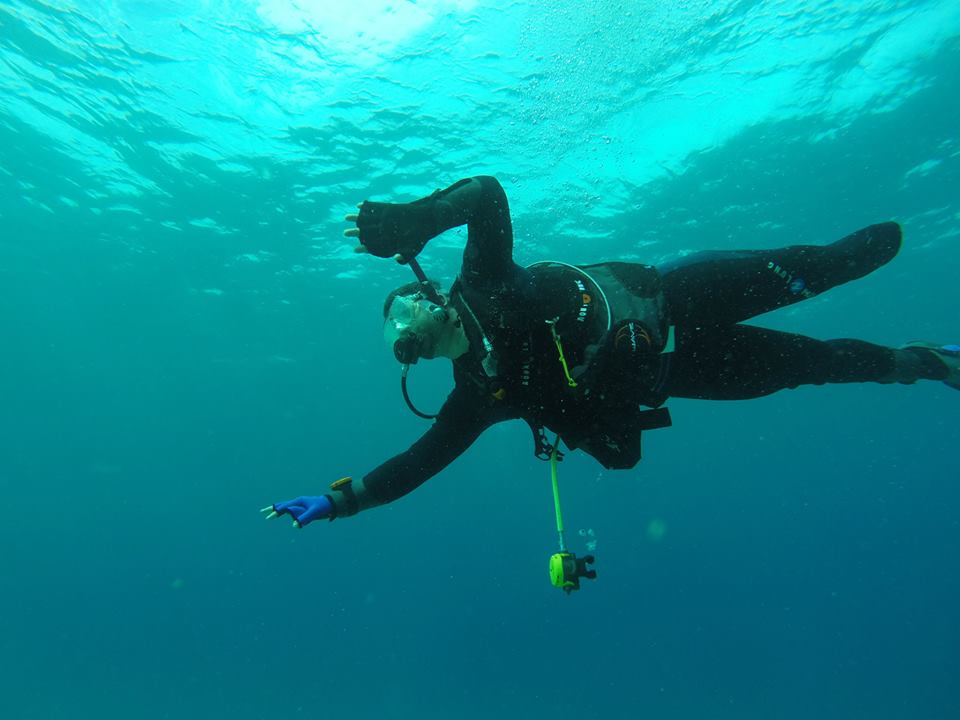
The feeling of weightlessness and the independent mobility that scuba diving provides can offer positive rehabilitative benefits for those suffering with PTSD
After speaking to Chris and Danny, it was clear to me that the benefits of using scuba diving as a form of rehabilitation for veterans were just too vast to ignore, and I was sure that there must have been other people out there reporting these same benefits. In an effort to understand this more, I scoured the medical databases for previous research on this subject, and was amazed at what I found….
Despite the recent growing interest in the rehabilitative benefits of scuba diving from the disabled population (Cheng J 2005), in the past, physicians prohibited patients with neuromuscular disease or disability from participating in scuba diving (Madorsky JG 1988). This was because of the widespread belief at the time that allowing someone who is not ‘able bodied’ to take part in such a perceived risky sport was dangerous; however, in 1992 a research paper by Muller showed that participants classed as ‘disabled’ had no difficulties while taking part in a scuba diving course, therefore showing no reason to create a blanket exclusion for disabled individuals. The report in fact actually highlighted the opportunities that SCUBA diving affords this group, like moving without assistive devices in a gravity-free environment. He uses the experience of a person with T10 paraplegia to illustrate the benefits of completing specific scuba diving certifications, and thus believes these benefits could be extrapolated to a wide variety of disabilities such as paraplegia, quadriplegia and amputation.
Spasticity is a common symptom of paraplegics and has a massively detrimental effect on quality of life, and is usually treated with pharmaceuticals (such as baclofen); however, these medications lead to extreme side effects such as drowsiness or fatigue. Haydn et al (2007) showed that SCUBA rehabilitation of disabled patients improved their spasticity, and this research showed that dosages of baclofen could then be lowered. These findings are by no means one-off’s; there have been several similar studies showing comparable results going back to a paper by Williamson in 1984.
Mueller M. in 1992 conducted a survey of 27 disabled SCUBA divers, and 84% noted significant psychological improvements (increases in self-confidence and better community integration) from learning to dive, and research carried out by Carin-Levy G and Jones D in 2007 reported that disabled respondents indicated that diving is a challenging, enjoyable activity that enhances their quality of life through enriching social experiences and improved self-concept. Furthermore, subjects stressed that carrying out the activity in a buoyant environment allowed them to feel weightless, thus free from their impairments and equal to non-disabled divers. Hemelryck and his team did some research in 2014 to see if SCUBA diving had any detrimental effects on cognitive function (such as reaction time). In this research over a 100 SCUBA divers had their cognition assessed and it was found that SCUBA diving has no detrimental effects on cognitive ability.
Understandably it is still however mindful to appreciate individuals with disabilities may need specialist adaptations in kit or protocol when diving, and even Williamson discussed way back in 1984 that although the current general guidelines for the medical assessment of non-disabled divers appears to be suitable for disabled persons, additionally each particular disability demands careful individual assessment; and later in 1987, a paper by Carol discussed the importance of utilising correct safety precautions such as avoiding abrasions in insensate extremities, and also protection against sunburn or chilling by wearing the correct personal protective equipment.
Looking at the evidence available, it seems that today’s Doctors should be encouraged to support those individuals who wish to explore the submerged two thirds of our planet for its potential rehabilitative opportunities, and until scientific data can demonstrate actual increased medical risk, the psychologic benefits of diving for the disabled appear to outweigh the risks.
Furthermore, personal attributes such as the desire for order, risk seeking behaviour and/or goal orientated behaviour are important characteristics that need to be taken into consideration when tailoring a person’s therapy, as shown by RM Scarified 2013, who speaks about service men and women and how they intrinsically seek and enjoy regime, danger, risks and reward. I believe this is why SCUBA diving provides an amazing rehabilitative treatment of choice for our injured service men and women. And as one of the next generation of Doctors, I will be supporting research in this area 100%.
References
Arnsten A, Raskind M,. Taylor F, Connor D. (2015) The effects of stress exposure on prefrontal cortex: Translating basic research into successful treatments for post-traumatic stress disorder. Neurobiology of stress. 1 , 10, pp89-99.
Carin-Levy G and Jones D. (2007) Psychosocial aspects of scuba diving for people with physical disabilities: An occupational science perspective. Canadian Journal of Occupational Therapy. 74,1, pp.6-14
Carroll JF ( 1987). Scuba diving with disabilities. Sports Spokes. 62,13, pp 45-47
Cheng J and Diamond M. (2005) SCUBA diving for individuals with disabilities. American Journal of physical medicine & Rehabilitation. 84,5,pp369-375.
Deptherapy. 2015. Deptherapy blog. [ONLINE] Available at: http://www.deptherapy.co.uk [Accessed 07 December 15].
Haydn T, Brenneis C, Schmutzhard J, Gerstenbrand F, Saltuan L, Schmutzhard E.( 2007) Scuba diving — a therapeutic option for patients with paraplegia. Journal of Neuropsychiatry and clinical neurosciences. 21, 3, pp226-229.
Hemelryck W, Germonpré P Papadopoulou V, Rozloznik, M, Balestra C. (2014) Long term effects of recreational SCUBA diving on higher cognitive function. Scandanavian journal of medicine and science in sports. 24, 6, pp928-934.
Madorsky JG, Madorsky AG (1988).Scuba diving: taking the wheelchair out of wheelchair sports. Archive Physical Medicine and Rehabilitation. 69, 3, pp215-8.
Ministry of Defence. 2013. Freedom of information regarding PTSD . [ONLINE] Available at: https://www.gov.uk/government/uploads/system/uploads/attachment_data/file/261187/PUBLIC_1383036796.pdf. [Accessed 07 December 15].
Mueller M. (1992). Psychological benefits of scuba diving in the disabled: A survey. Archives of Physical Medicine and Rehabilitation. 73, 10, pp1014.
Blogs
Northern Red Sea Reefs and Wrecks Trip Report, Part 3: The Mighty Thistlegorm

Jake Davies boards Ghazala Explorer for an unforgettable Red Sea diving experience…
Overnight, the wind picked up, making the planned morning dive a bit bumpy on the Zodiacs to the drop point on Thomas Reef. There, we would dive along the reef before descending through the canyon and then passing under the arch before ascending the wall with a gentle drift. The site provided great encounters with more pelagic species, including shoals of large barracuda, tuna, and bigeye trevally.
Once back on the boat, it was time to get everything tied down again as we would head back south. This time, with the wind behind us, heading to Ras Mohammed to dive Jackfish Alley for another great gentle drift wall dive before then heading up the coast towards the Gulf of Suez to moor up at the wreck of the Thistlegorm. This being the highlight wreck dive of the trip and for many onboard, including myself, it was the first time diving this iconic wreck. I had heard so much about the wreck from friends, and globally, this is a must on any diver’s list. Fortunately for us, there was only one other boat at the site, which was a rarity. A great briefing was delivered by Ahmed, who provided a detailed background about the wreck’s history along with all the required safety information as the currents and visibility at the site can be variable.

Kitting up, there was a lot of excitement on deck before entering the water and heading down the shoreline. Descending to the wreck, there was a light northerly current which reduced the visibility, making it feel more like the conditions that can be found off the Welsh coast. At 10m from the bottom, the outline of the wreck appeared as we reached the area of the wreck which had been bombed, as our mooring line was attached to part of the propeller shaft. Arriving on deck, instantly everywhere you looked there were many of the supplies which the ship was carrying, including Bren Carrier tanks and projectiles that instantly stood out.

We headed around the exterior, taking a look at the large propeller and guns mounted on deck before entering the wreck on the port side to take a look in the holds. It was incredible to see all the trucks, Norton 16H, and BSA motorcycles still perfectly stacked within, providing a real snapshot in time.

Overall, we had four dives on the Thistlegorm, where for all of the dives we were the only group in the water, and at times, there were just three of us on the whole wreck, which made it even more special, especially knowing that most days the wreck has hundreds of divers. Along with the history of the wreck, there was plenty of marine life on the wreck and around, from big green turtles to batfish, along with shoals of mackerel being hunted by trevally. Some unforgettable dives.

The final leg of the trip saw us cross back over the Suez Canal to the Gobal Islands where we planned to stay the night and do three dives at the Dolphin House for the potential of sharing the dive with dolphins. The site, which included a channel that was teeming with reef fish, especially large numbers of goatfish that swam in large shoals along the edge of the reef. These were nice relaxing dives to end the week. Unfortunately, the dolphins didn’t show up, which was okay as like all marine life they are difficult to predict and you can’t guarantee what’s going to be seen. With the last dive complete, we headed back to port for the final night where it was time to clean all the kit and pack before the departure flight the next day.

The whole week from start to finish on Ghazala Explorer was amazing; the boat had all the facilities you need for a comfortable week aboard. The crew were always there to help throughout the day and the chefs providing top quality food which was required after every dive. The itinerary providing some of the best diving with a nice mixture of wreck and reef dives. I would recommend the trip to anyone, whether it’s your first Red Sea liveaboard in the Red Sea or you’re revisiting. Hopefully, it’s not too long before I head back to explore more of the Red Sea onboard Ghazala Explorer.

To find out more about the Northern Red Sea reef and wrecks itineraries aboard Ghazala Explorer, or to book, contact Scuba Travel now:
Email: dive@scubatravel.com
Tel: +44 (0)1483 411590
Photos: Jake Davies / Avalon.Red
Blogs
Northern Red Sea Reefs and Wrecks Trip Report, Part 2: Wall to Wall Wrecks

Jake Davies boards Ghazala Explorer for an unforgettable Red Sea diving experience…
The second day’s diving was a day full of wreck diving at Abu Nuhas, which included the Chrisoula K, Carnatic, and Ghiannis D. The first dive of the day was onto the Chrisoula K, also known as the wreck of tiles. The 98m vessel remains largely intact where she was loaded with tiles which can be seen throughout the hold. The stern sits at 26m and the bow just below the surface. One of the highlights of the wreck is heading inside and seeing the workroom where the machinery used for cutting the tiles are perfectly intact. The bow provided some relaxing scenery as the bright sunlight highlighted the colours of the soft coral reef and the many reef fish.

Following breakfast, we then headed to the next wreck, which was the Carnatic. The Carnatic is an 89.9m sail steamer vessel that was built in Britain back in 1862. She ran aground on the reef back in 1869 and remains at 27m. At the time, she was carrying a range of items, including 40,000 sterling in gold. An impressive wreck where much of the superstructure remains, and the two large masts lay on the seafloor. The wooden ribs of the hull provide structures for lots of soft corals, and into the stern section, the light beams through, bouncing off the large shoals of glass fish that can be found using the structure as shelter from the larger predators that are found outside of the wreck.

The final wreck at Abu Nuhas was the Ghiannis D, originally called ‘Shoyo Maru,’ which was 99.5m long and built in Japan back in 1969 before becoming a Greek-registered cargo ship in 1980. The ship then ran aground on the reef on April 19th, 1983, and now sits at the bottom at a depth of 27m. Heading down the line, the stern of the ship remains in good condition compared to the rest of the hull. The highlight of the wreck, though, is heading into the stern section and down the flights of stairs to enter the engine room, which remains in good condition and is definitely worth exploring. After exploring the interior section of the ship, we then headed over to see the rest of the superstructure, where it’s particularly interesting to see the large table corals that have grown at the bow relatively quickly considering the date the ship sank. After surfacing and enjoying some afternoon snacks, we made sure everything was strapped down and secured as we would be heading north and crossing the Gulf of Suez, where the winds were still creating plenty of chop.

The next morning, it was a short hop to Ras Mohammed Nature Reserve for the next couple of days of diving. The 6am wake-up call came along with the briefing for the first site we would be diving, which was Shark & Yolanda. The low current conditions allowed us to start the dive at Anemone City, where we would drift along the steep, coral-filled wall. These dives involved drifts, as mooring in Ras Mohammed wasn’t allowed to protect the reefs. As a dive site, Shark & Yolanda is well-known and historically had a lot of sharks, but unfortunately not so many in recent years, especially not so early in the season. However, there was always a chance when looking out into the blue.

The gentle drift took us along the steep walls of the site, with plenty of anemone fish to be seen and a huge variety of corals. It wasn’t long into the dive before we were accompanied by a hawksbill turtle, who drifted with us between the two atolls before parting ways. Between the two reefs, the shallow patch with parts of coral heads surrounded by sand provided the chance to see a few blue-spotted stingrays that were mainly resting underneath the corals and are always a pleasure to see. With this being the morning dive, the early sunlight lit up the walls, providing tranquil moments. Looking out into the blue, there was very little to be seen, but a small shoal of batfish shimmering underneath the sunlight was a moment to capture as we watched them swim by as they watched us.

Towards the end of the dive, we stopped at the wreck of the Jolanda where the seafloor was scattered with toilets from the containers it was carrying. This provided a unique site to make a safety stop, which was also accompanied by a large barracuda slowly swimming by, along with a hawksbill turtle calmly swimming over the reef as the sun rays danced in the distance.
For the next dive, we headed north to the Strait of Tiran to explore the reefs situated between Tiran Island and Sharm El Sheik, which were named after the British divers who had found them. We started on Jackson before heading to Gordons Reef, where we also did the night dive. All the atolls at these sites provided stunning, bustling coral reefs close to the surface and steep walls to swim along, which always provided the opportunity to keep an eye out for some of the larger species that can be seen in the blue. Midwater around Jackson Reef was filled with red-toothed triggerfish and shoals of banner fish, which at times were so dense that you couldn’t see into the blue. Moments went by peacefully as we enjoyed the slow drift above the reef, watching these shoals swim around under the mid-afternoon sun.

The night dive at Gordon’s Reef was mainly among the stacks of corals surrounded by sand, which was great to explore under the darkness. After some time circling the corals, we came across what we were really hoping to find, and that was an octopus hunting on the reef. We spent the majority of the dive just watching it crawl among the reef, blending into its changing surroundings through changes in colour and skin texture. It’s always so fascinating and captivating to watch these incredibly intelligent animals, in awe of their ability to carry out these physical changes to perfectly blend into the reef. Before we knew it, it was time to head back to the boat to enjoy a well-deserved tasty dinner prepared by the talented chefs onboard.
Check in for the 3rd and final part of this series from Jake tomorrow!
To find out more about the Northern Red Sea reef and wrecks itineraries aboard Ghazala Explorer, or to book, contact Scuba Travel now:
Email: dive@scubatravel.com
Tel: +44 (0)1483 411590
Photos: Jake Davies / Avalon.Red
-

 News3 months ago
News3 months agoHone your underwater photography skills with Alphamarine Photography at Red Sea Diving Safari in March
-

 News3 months ago
News3 months agoCapturing Critters in Lembeh Underwater Photography Workshop 2024: Event Roundup
-

 Marine Life & Conservation Blogs2 months ago
Marine Life & Conservation Blogs2 months agoCreature Feature: Swell Sharks
-

 Blogs2 months ago
Blogs2 months agoMurex Resorts: Passport to Paradise!
-

 Blogs2 months ago
Blogs2 months agoDiver Discovering Whale Skeletons Beneath Ice Judged World’s Best Underwater Photograph
-

 Gear Reviews3 months ago
Gear Reviews3 months agoGear Review: Oceanic+ Dive Housing for iPhone
-

 Marine Life & Conservation2 months ago
Marine Life & Conservation2 months agoSave the Manatee Club launches brand new webcams at Silver Springs State Park, Florida
-

 News3 months ago
News3 months agoWorld’s Best Underwater Photographers Unveil Breathtaking Images at World Shootout 2023


